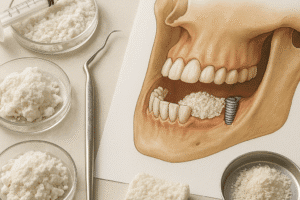The human skeleton is a dynamic organ system that undergoes continuous renovation through a process known as bone remodeling. As individuals grow older, the delicate balance between bone formation and bone resorption shifts, leading to changes in skeletal strength and structure. This article explores the multifaceted impact of aging on bone metabolism, examining underlying mechanisms, clinical consequences, and emerging interventions aimed at preserving skeletal health.
Bone Remodeling: The Foundation of Skeletal Integrity
Cellular Players in Remodeling
Bone remodeling relies on coordinated activity between two primary cell types: osteoblasts (bone-forming cells) and osteoclasts (bone-resorbing cells). Osteoblasts synthesize new bone matrix composed of collagen and mineral components, whereas osteoclasts degrade existing matrix to allow for renewal. This coupling maintains optimal bone mineral density and ensures microdamage repair.
Molecular Regulators
- RANK/RANKL/OPG Pathway: Regulates osteoclast differentiation and activity.
- Wnt/β-catenin Signaling: Promotes osteoblast proliferation and survival.
- Local Growth Factors: Including IGF-1, TGF-β, and BMPs that modulate both formation and resorption.
Age-Related Changes in Bone Metabolism
Shift in Remodeling Balance
With advancing age, bone remodeling becomes skewed toward resorption. This imbalance arises from diminished osteoblast function, increased osteoclast lifespan, and altered signaling. Senescent cells accumulate within bone, secreting pro-resorptive cytokines and driving chronic inflammation.
Hormonal Decline
Sex hormones play a pivotal role in skeletal maintenance. In women, estrogen withdrawal after menopause accelerates bone turnover and reduces matrix deposition. In men, gradual testosterone decline also contributes to net bone loss, albeit at a slower rate.
Oxidative Stress and Senescence
Accumulation of reactive oxygen species leads to oxidative stress within bone cells, impairing osteoblast differentiation and promoting osteoclast activation. Cellular senescence further diminishes regenerative capacity, as aged osteoprogenitor cells exhibit reduced proliferative potential.
Hormonal Influences and Nutritional Factors
Vitamin D and Calcium Homeostasis
Vitamin D ensures efficient calcium absorption in the gut and maintains serum calcium levels critical for mineralization. Insufficient levels lead to secondary hyperparathyroidism, increasing bone resorption. Adequate dietary calcium and sun-mediated vitamin D synthesis are essential for sustaining remineralization.
Role of Dietary Protein and Micronutrients
- Protein provides amino acids for collagen synthesis by osteoblasts.
- Micronutrients like magnesium, phosphorus, and vitamin K are co-factors in bone matrix formation.
- Omega-3 fatty acids may modulate inflammatory mediators, benefiting bone health.
Clinical Consequences of Impaired Bone Metabolism
Osteoporosis and Fracture Risk
Declining bone mass and microarchitectural deterioration result in osteoporosis, characterized by increased fracture susceptibility. Common sites include the hip, spine, and wrist. Fractures in elderly populations dramatically elevate morbidity, mortality, and healthcare costs.
Vertebral Deformities and Loss of Height
Cumulative microcracks and vertebral wedge fractures cause kyphosis and height reduction. These deformities impair pulmonary function and exacerbate fall risk due to altered center of gravity.
Emerging Therapeutic Strategies
Anti-Resorptive Agents
- Bisphosphonates: Inhibit osteoclast-mediated bone resorption by inducing osteoclast apoptosis.
- Denosumab: A monoclonal antibody against RANKL, reducing osteoclast differentiation.
- Selective Estrogen Receptor Modulators (SERMs): Preserve bone mass with partial estrogen agonist activity in bone tissue.
Anabolic Treatments
Unlike anti-resorptives, anabolic therapies stimulate osteoblast activity:
- PTH Analogs (Teriparatide): Intermittent parathyroid hormone dosing enhances bone formation.
- Sclerostin Inhibitors (Romosozumab): Block sclerostin to potentiate Wnt signaling and osteoblastogenesis.
Lifestyle and Mechanical Interventions
Regular weight-bearing exercise induces mechanical loading that upregulates osteoblast function and strengthens trabecular architecture. Fall-prevention programs and balance training mitigate fracture incidence in the elderly.
Future Directions in Research
Senolytics and Cellular Rejuvenation
Eliminating senescent cells with senolytic compounds shows promise in restoring youthful bone remodeling dynamics. Preclinical models reveal improved bone mass and microarchitecture following targeted clearance of aged cells.
Stem Cell and Gene-Editing Approaches
Mesenchymal stem cell therapies aim to repopulate the osteoprogenitor pool, while CRISPR-based gene editing may correct age-related genetic dysregulation within bone tissue.
Nanotechnology for Targeted Delivery
Nanoparticle systems offer precision delivery of drugs, growth factors, and nucleic acids to bone microenvironments, enhancing efficacy and reducing systemic side effects.













